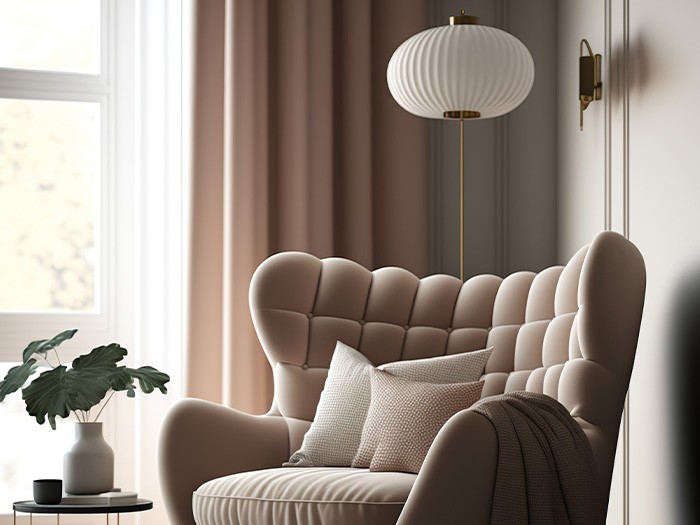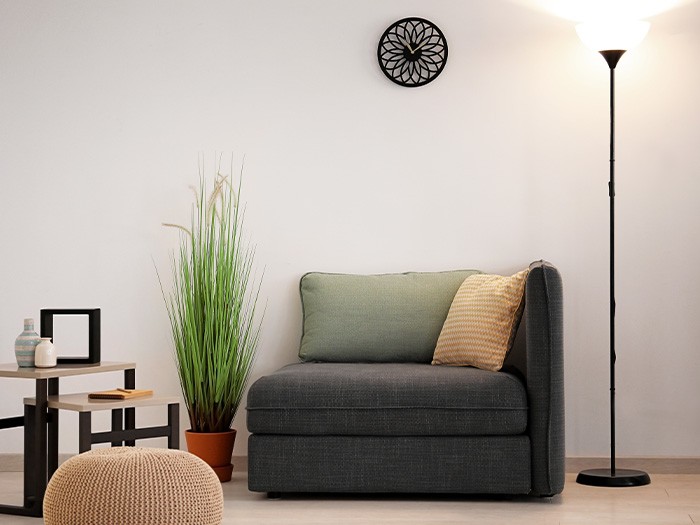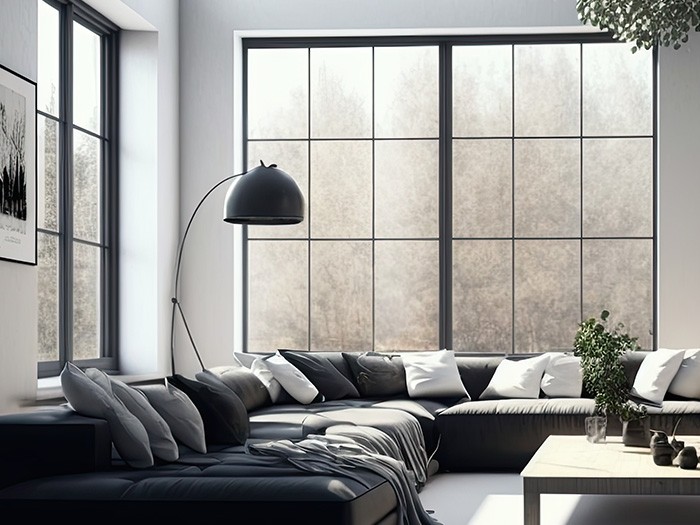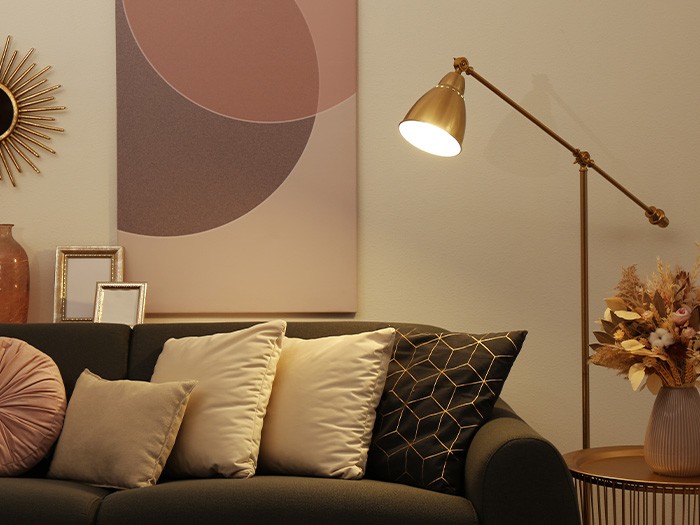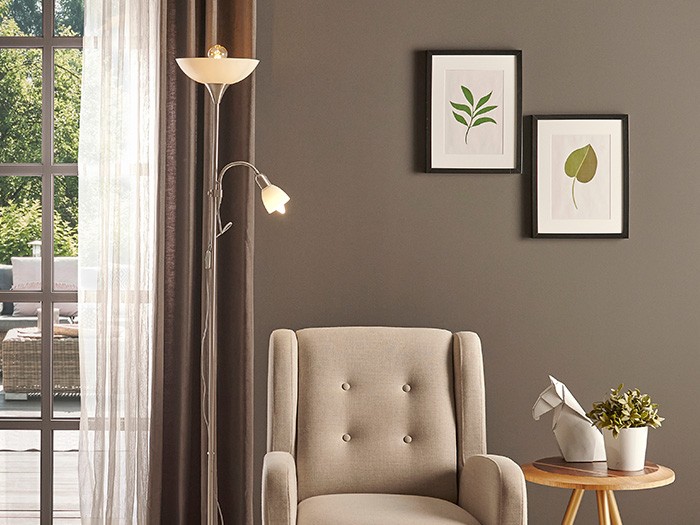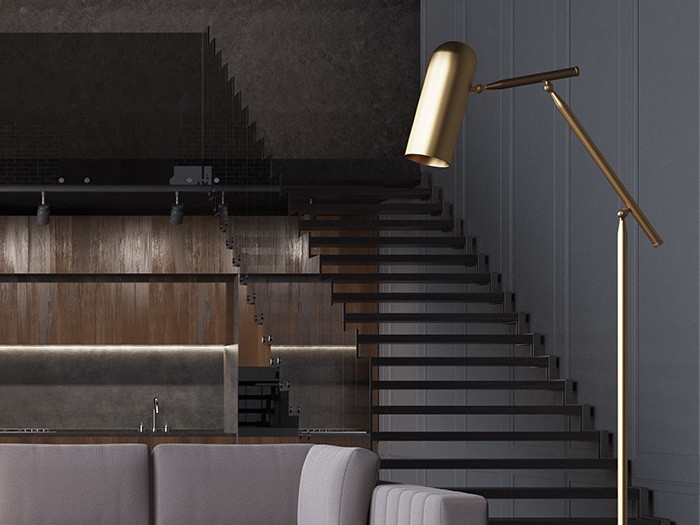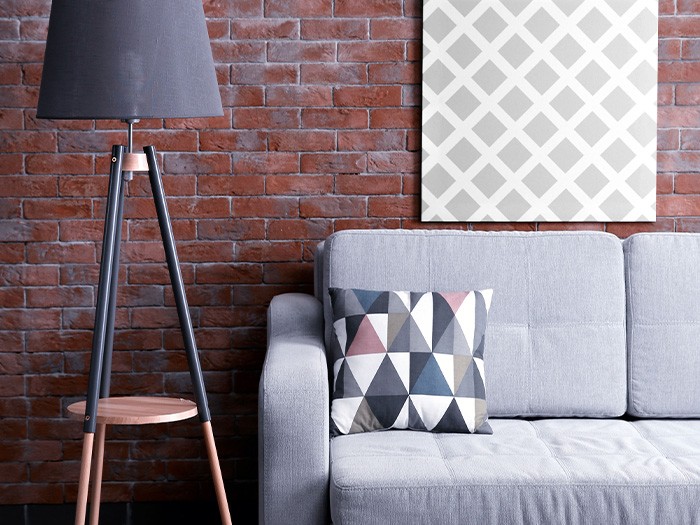A floor lamp brings together form and function—it adds a stylish design element to a room while also providing purposeful illumination. And with so many choices available, there’s a floor lamp for every aesthetic.
Before you begin shopping, though, it’s important to do a little upfront work, so that you end up with a lamp that looks good and meets your needs. Here are a few things to think about as you consider the possibilities.
Ambient vs. Task Lighting
When it comes to floor lamps, you should start narrowing down your options based on the type of lighting you need.
Ambient lighting, which projects light sideways, provides overall diffused light for a room. Task lighting projects lighting downward, illuminating the space directly below it and making it ideal for reading, doing crafts or working.
Lamp Types for Ambient Lighting
Shaded lamps. With this design, the shade is at the top of a pole. Shaded lamps with a single pole are ideal for a corner or next to a chair or sofa, as they don’t take up a lot of space. You’ll also find shaded lamps with a tripod base; if this type of lamp appeals to you, make sure you have enough room on the floor and the surrounding area, so the lamp doesn’t look crowded or pose a tripping hazard.
Torchiere lamps. A torchiere lamp has a single pole and an upward-pointing shade, which directs light toward the ceiling. Like a shaded lamp with a single pole, a torchiere lamp doesn’t take up a lot of real estate.
Arc lamps. An arc lamp has a single light or multiple lights at the end of a long, extended arc; this type of lamp takes up a fair amount of space and is great for illuminating large seating areas or sectionals.
Lamp Types for Task Lighting
Pharmacy reading lamps. This type of lamp has a head and base that you can adjust to different heights.
Tree torchiere lamps. A tree torchiere lamp has one light source directing light upward, along with a few side lights, which you can use for task lighting.
Swing arm floor lamps. This type of lamp also provides task and ambient lighting, as you can easily adjust the position of the light source.
General Points to Keep in Mind
Lamp height. If you plan to place the lamp next to a chair, the bottom of the lamp shade should be at or slightly below eye level when you’re seated, in order to avoid glare. If the lamp won’t be directly next to a chair, use a taller lamp.
Of course, the taller the lamp, the wider the spread of light. So if you’re looking for task lighting, you will probably want a lamp where the light source is closer to you. Also make sure that the lamp height is on par with the scale of the rest of the furniture in your room (or consider purchasing a lamp that’s adjustable, so you can change up the height as needed).
Switch type. How do you want to be able to turn the lamp on and off? Most floor lamps have either a floor switch, which you operate with your foot, a pull chain or a small rotary knob.
Bulb type. The majority of lamps work with replaceable incandescent or LED bulbs, but some models include integrated LEDs. While integrated LEDs will last for years (think at least 10), take into account that you probably won’t be able to replace the bulb when it eventually wears out.
USB port. Want a convenient way to charge your phone? Look for a floor lamp with a built-in USB port.
Shelf space. If you’re short on space and looking for a spot to hold the remote or reading glasses, you might want to opt for a floor lamp with a built-in table or shelf.
